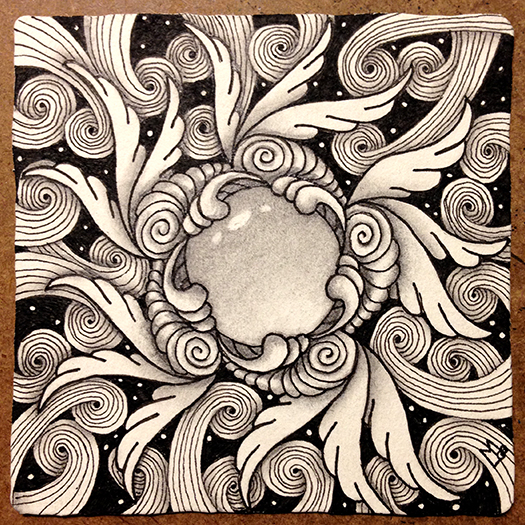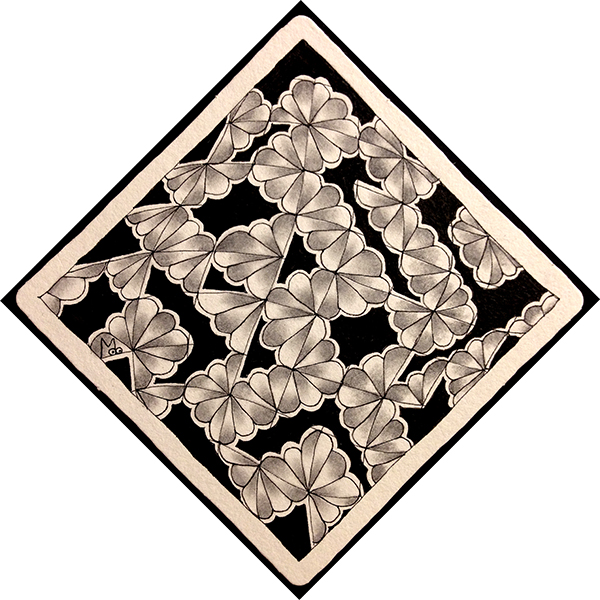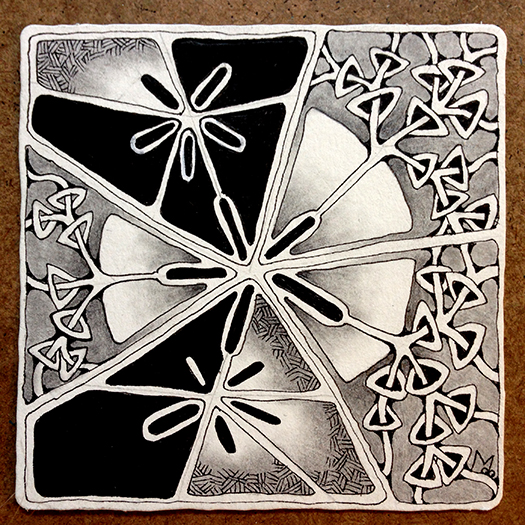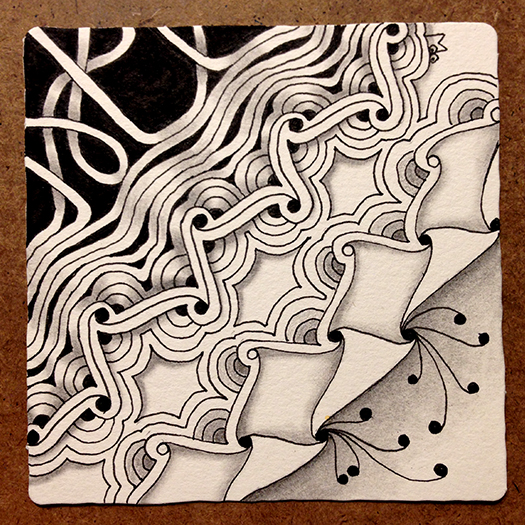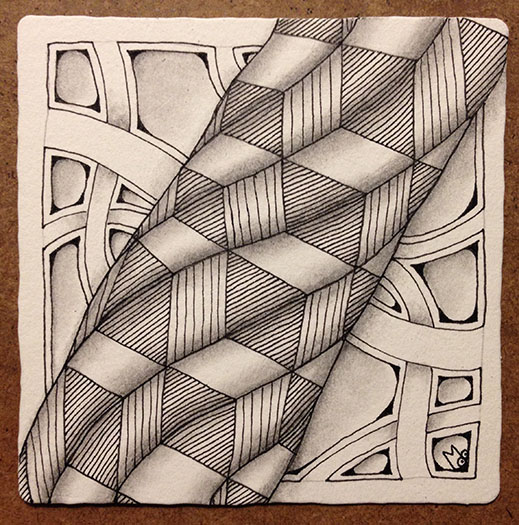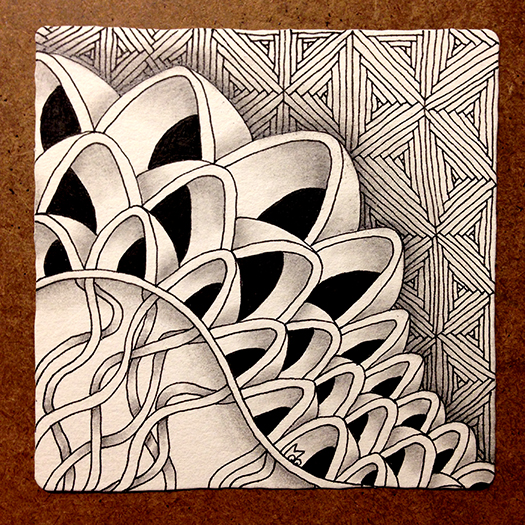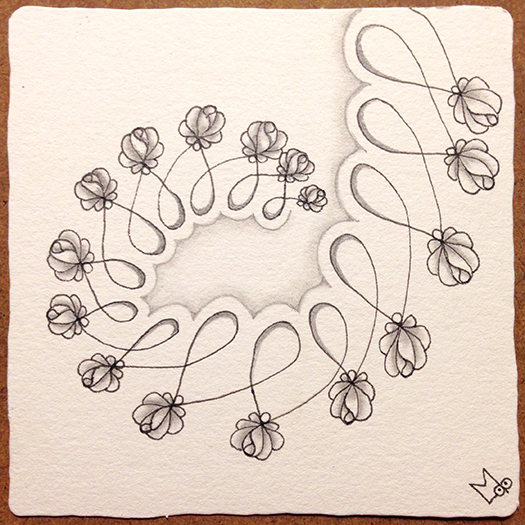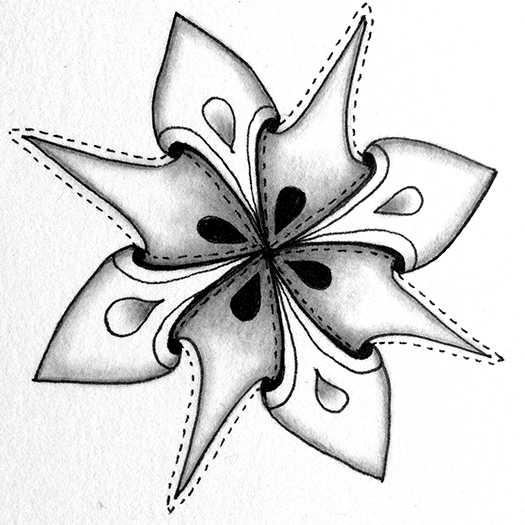
This week’s Square One (TM) Purely Zentangle focus tangle is Stella by Jana Pharmer (formerly Jana Roberts). Stepouts for Stella can be found here.
I started out this week drawing Stella in my sketchbook. Here is my first attempt. Stella is a fairly straight forward tangle that uses the elemental C stroke. It’s the same shape around the figure but every other one alternates direction.

As I drew this first version I began to see that one could expand it out through several rings like this:

Here, I’ve indicated the Stella in red so you can see it better. the Stella shape changes orientation as it’s drawn on each ring, sometimes up, sometimes down, sometimes on it’s side. The key is to align it to the shapes in the previous ring.

I then added some enhancements (tanglenhancers).


I finally added shading. I intended to do the background all black but got half way through and it seemed like I should stop.

It didn’t seem quite finished though so I added a little more shading around the edge on the light side of the tile. That provided the finishing touch for me.

Next I thought about trying Stella as a six armed figure instead of eight. When I tried it I realized that by making it a six armed figure I could turn it into a tesselated Reticulum (that’s a fancy name for a framework). Each shape was exactly the same so I could fit them together like a puzzle. The next pictures show the six armed figure I started with in red and then the finished tile.


Rick and Maria introduced “Reticula and Fragments” in their Zentangle Primer – Volume 1. Check here for more information about the book.
This weeks tangle really stimulated my tangler’s mind. I hope my examples stimulated yours.
As always if you see something in this post you’d like to try in your own work please feel free to do so.
Blessings,
Lynn














